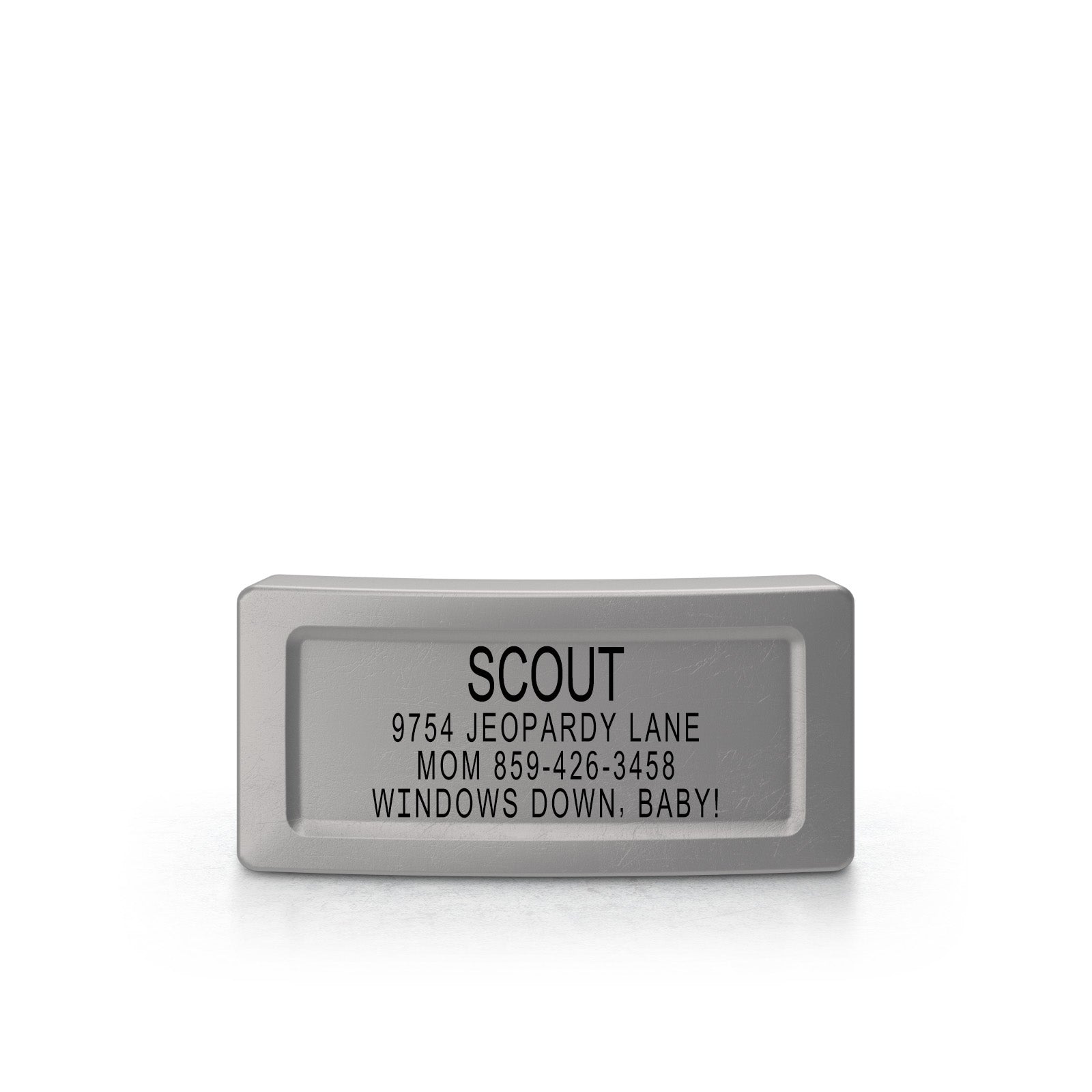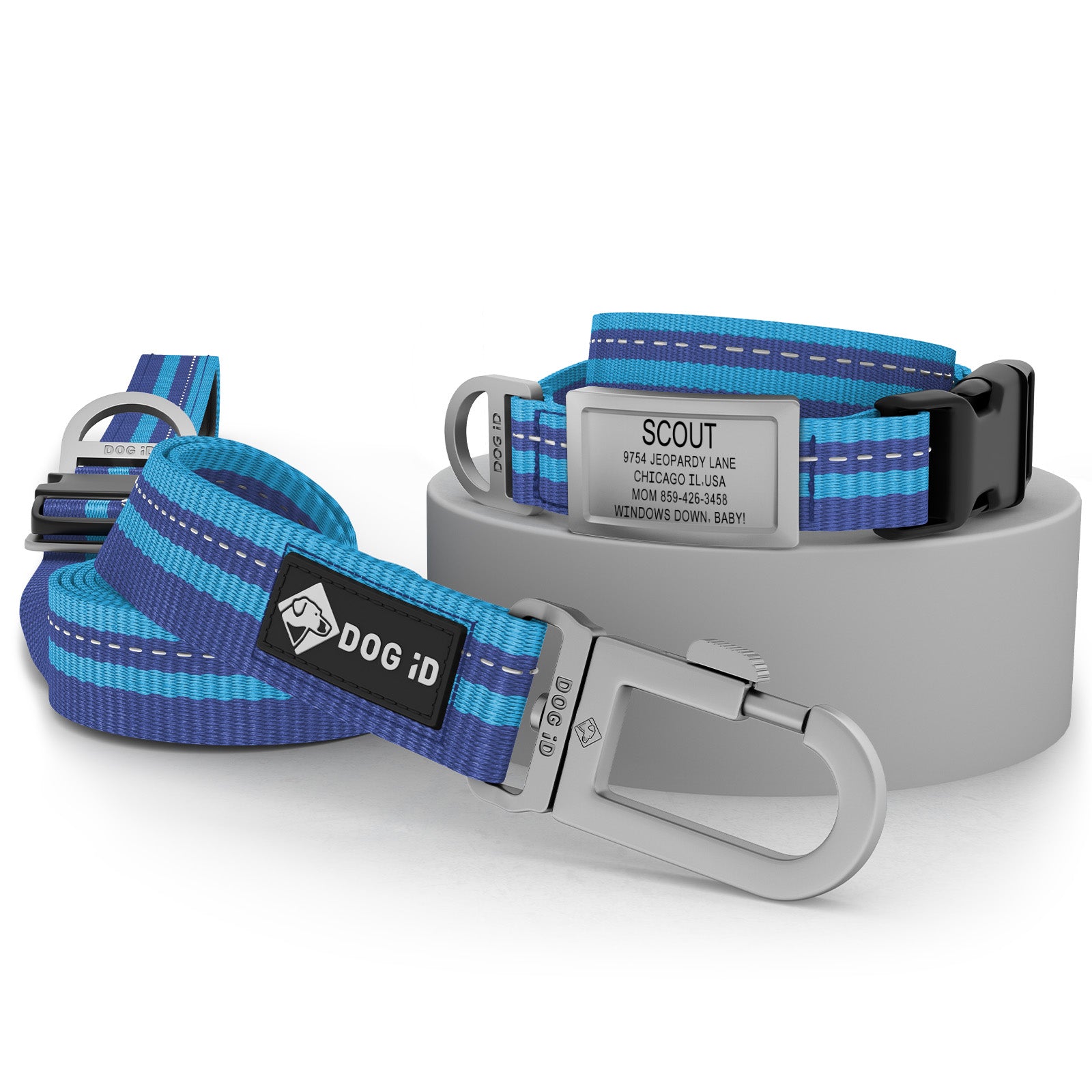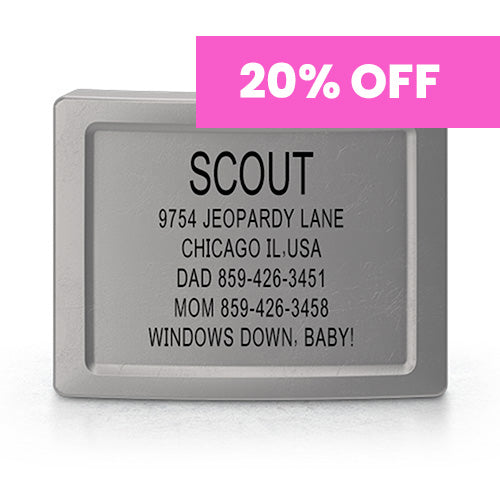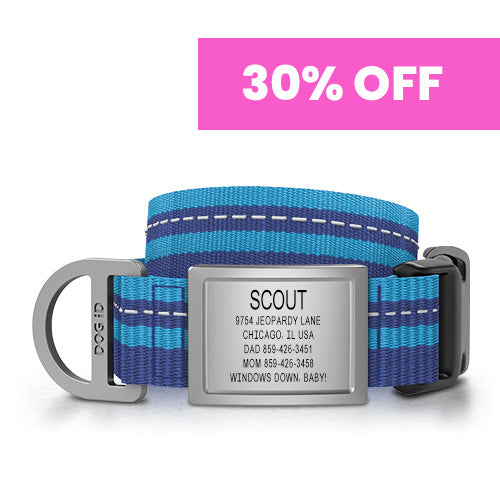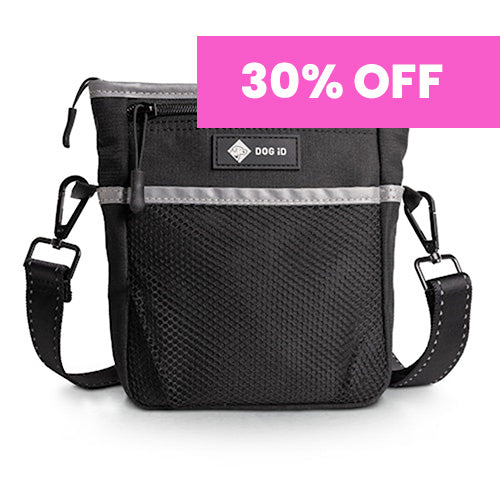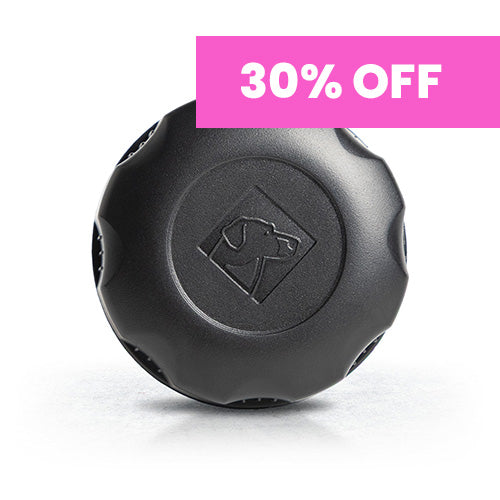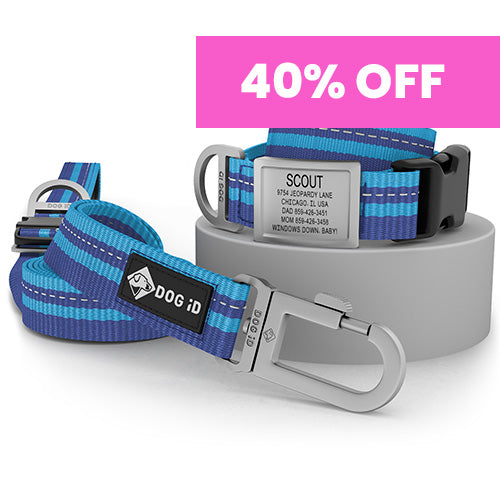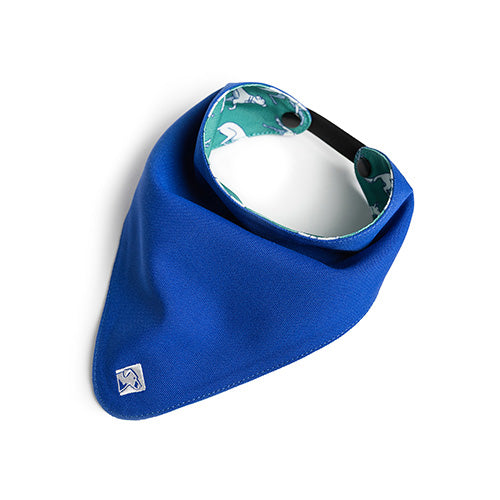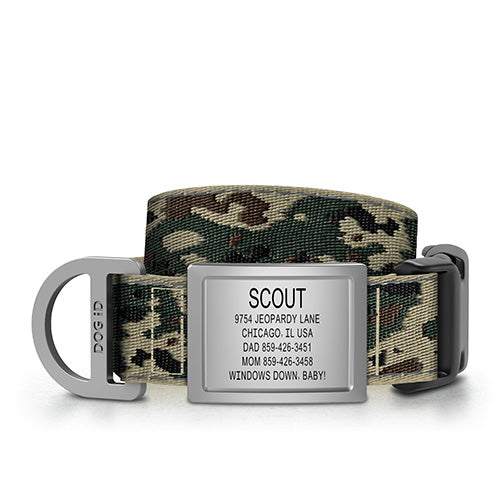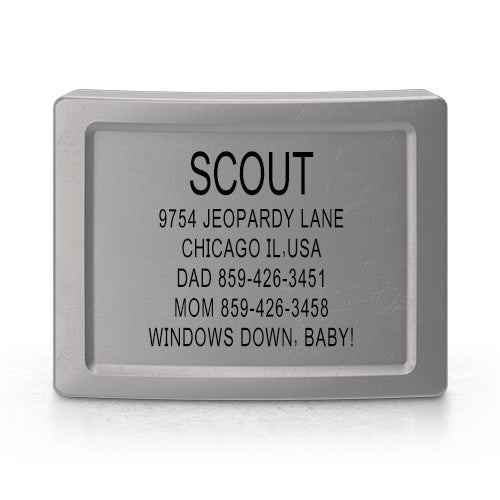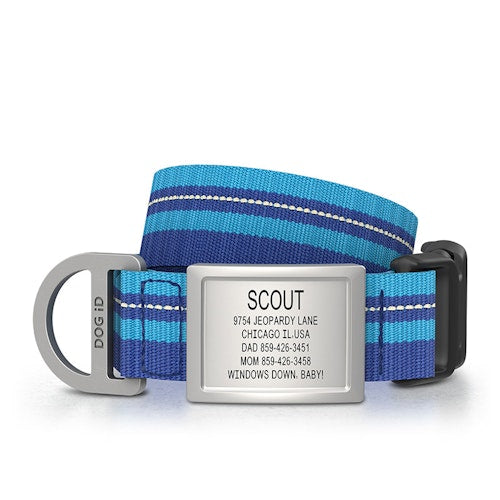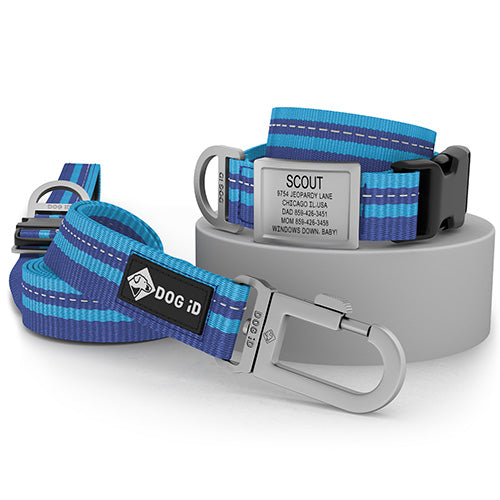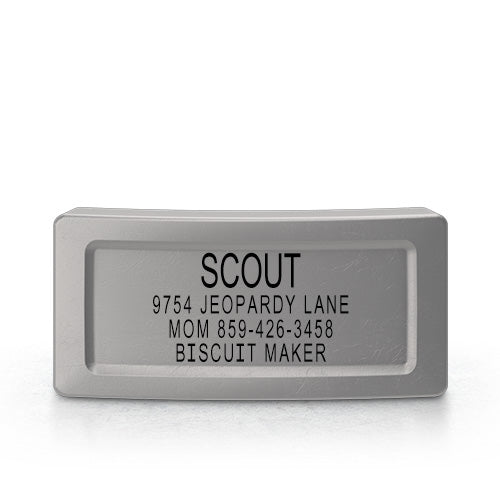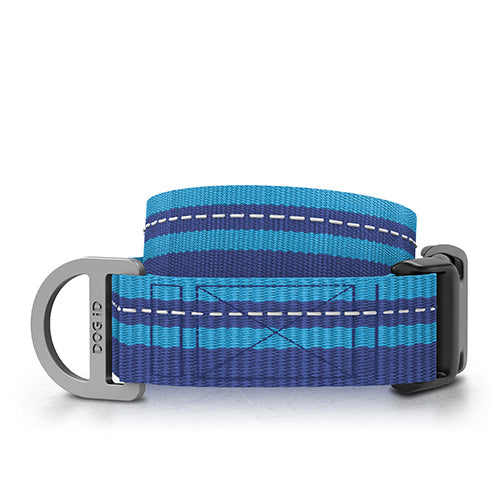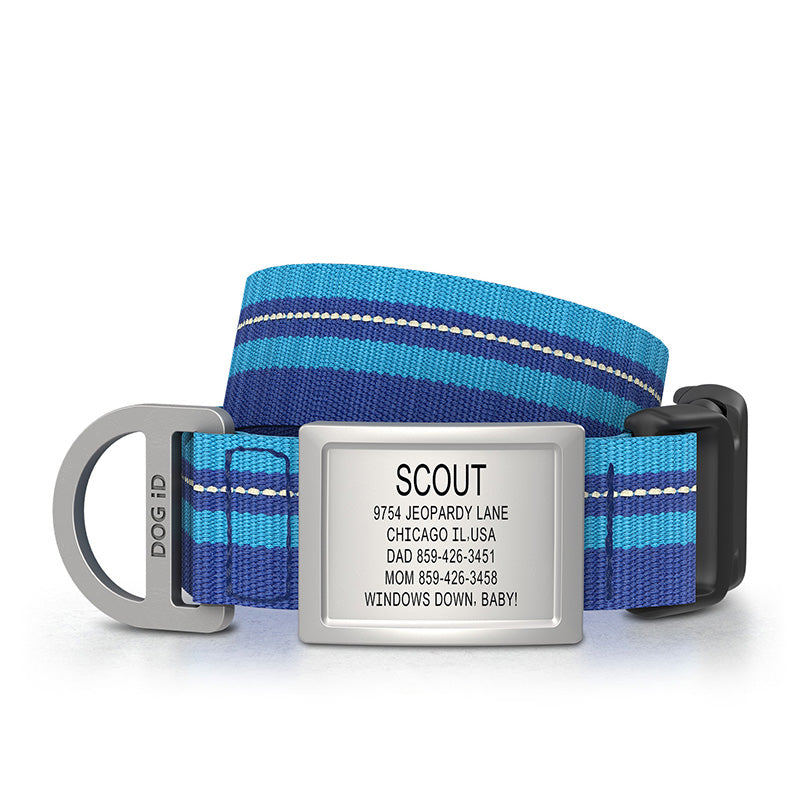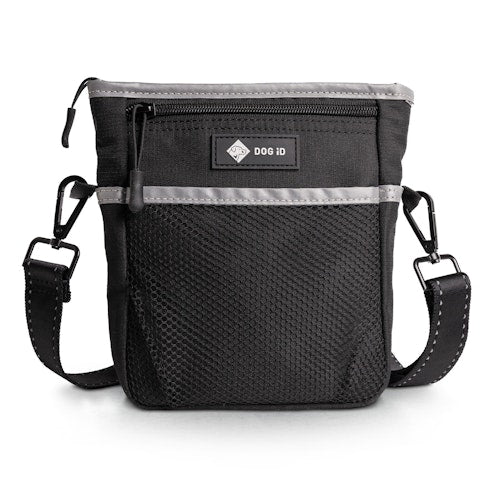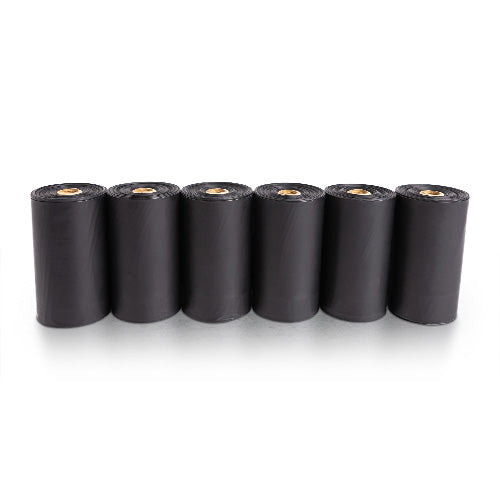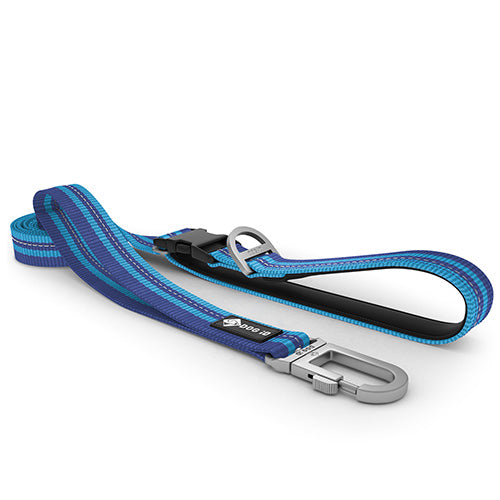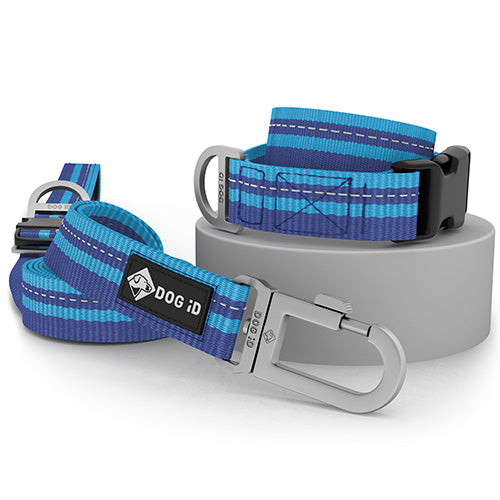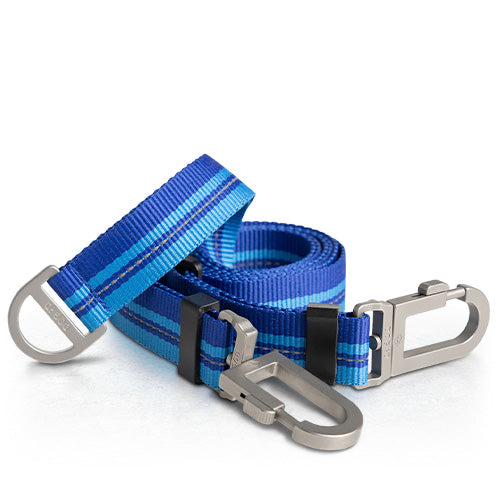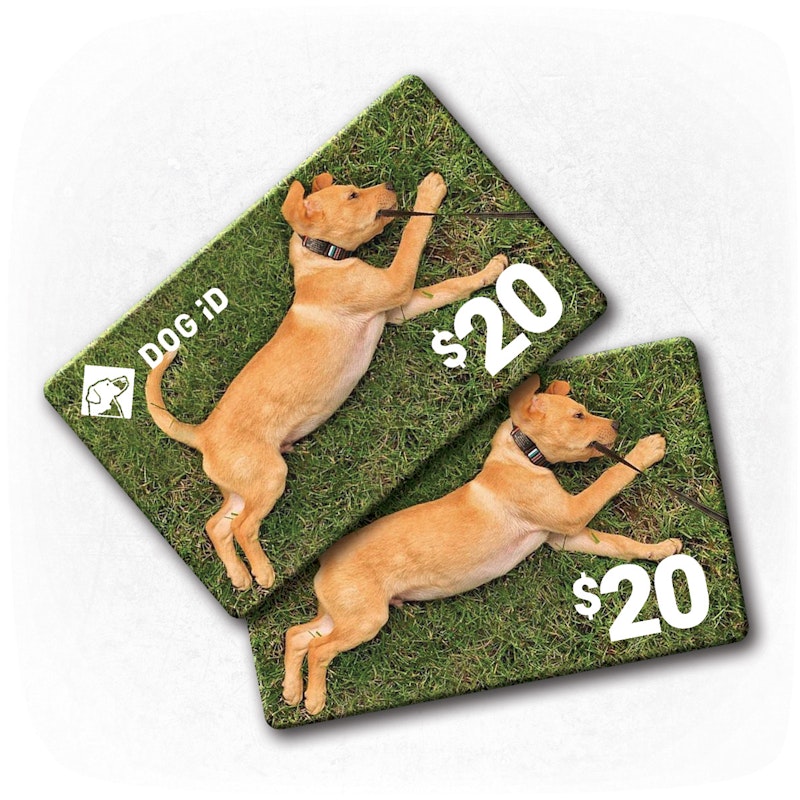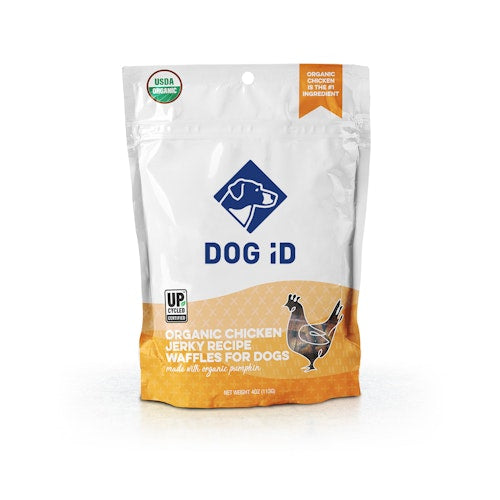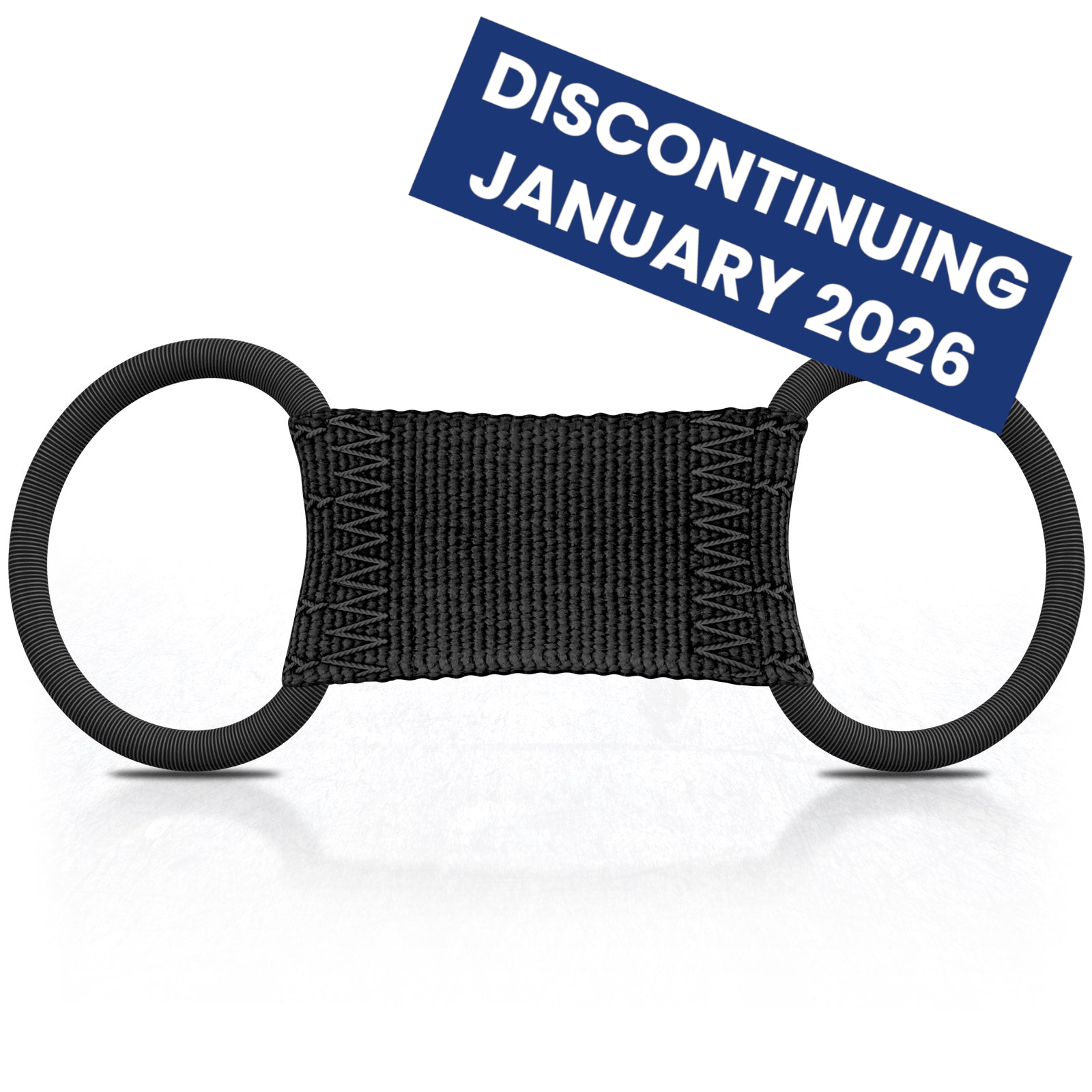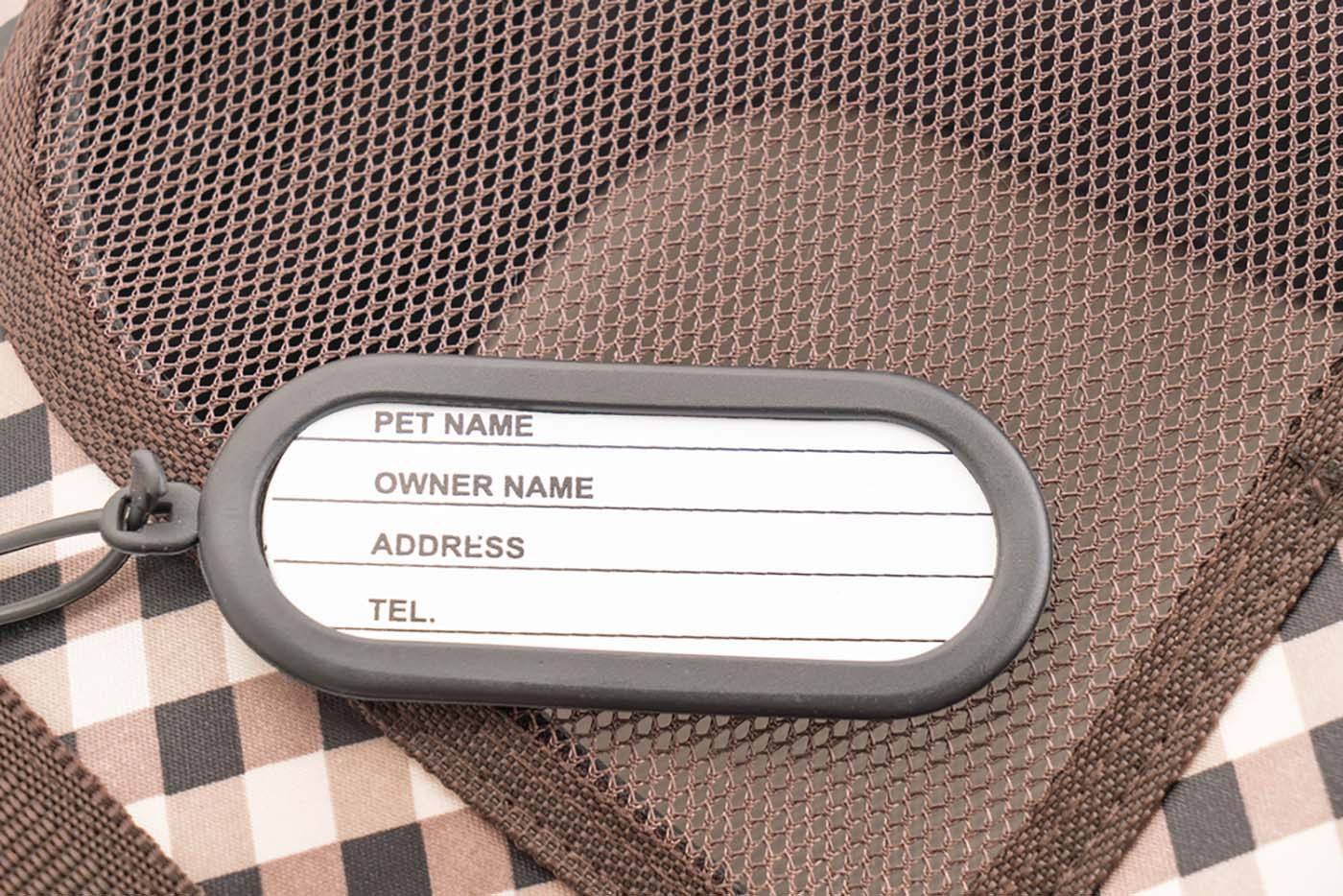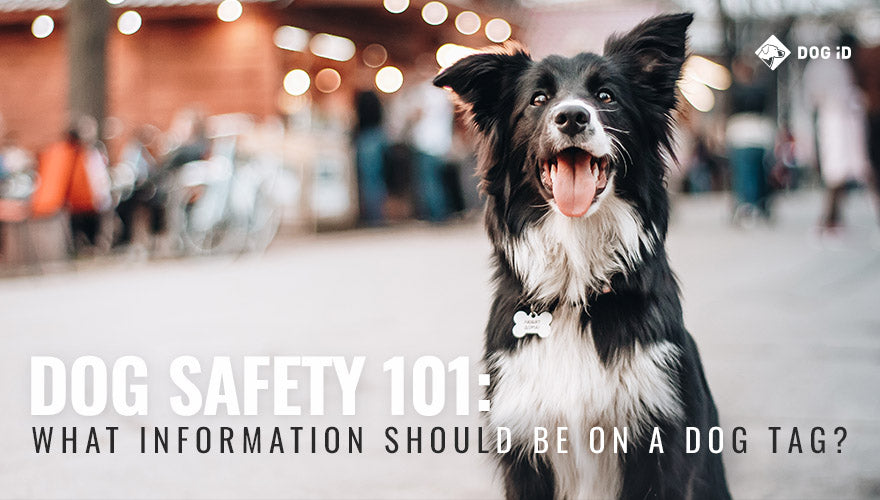Anyone who has lost their cat, even for a brief period of time, understands how important an engraved cat collar tag is to getting your pet home safely. While some folks rely on microchips, this more traditional approach of pet ownership identification can help to get your little furball home faster, especially when they’re just a few houses away from yours.
The key to a useful engraved cat collar tag is knowing what information to include and which ones to exclude. If you’ve ever wondered what to put on a cat ID tag, you’re in the right place.
In this blog, we’ll discuss everything you need to know about what to put on your engraved cat ID tags for faster identification, safety, and peace of mind.
5 Essential Engraved Cat Collar Tag Details
Unfortunately, most engraved cat collar tags are too small to fit all the information we’d like to communicate if someone finds our lost kitty. Therefore, it’s important to pick and choose which bits are most vital to getting them back safely.
In order of importance, here are the things that you should include:
1. Your Pet’s Name
This one might be a bit controversial, as there are some folks who vehemently oppose this practice. The argument for not including this information on a cat collar is that there are shady people out there who might steal your cat. Cat thieves can sometimes use a cat’s name to lure them. The belief is that if a person can call your cat by name, your pet might be easier to steal.

While this may be true, with specific breeds getting stolen more often than other types of cats, common house cat breeds are typically less targeted. That being said, if someone is close enough to read an engraved cat collar tag, they could very well be in a position to snatch your feline companion. In many cases, potential cat thieves might use tactics like luring cats with treats instead of calling them by name.
On a more positive note, there’s a strong case for including your pet’s name on their ID tag. Individuals with good intentions, perhaps a nearby neighbor, might find it significantly easier to return your lost cat when they can address it by its name.
2. Your Phone Number
f you want your animal to be returned, contact information is critical. Engraving your phone number on a cat’s ID tag acts as a direct line to you, especially vital for moments when you might not be at home. Including your area code ensures clarity even if your cat wanders far.
If space allows on the tag, adding an alternate number or even an email address provides multiple avenues for someone to reach out. Ensuring accurate contact details on the ID tags can mean a swift reunion.
3. Your Address
As mentioned earlier, if your fluffy friend escapes, there’s a fair chance it will only roam a few houses over. If so, a neighbor could potentially find your cat. In this scenario, the quickest way to get your kitty home is to put your address on the cat’s ID tag.
In the event that your cat travels further, it’s vital to have your full address on the engraved cat collar tag. For both indoor cats and outdoor cats, having an address on their ID tag can be crucial.
Even if you purchase tiny pet ID tags, you should have enough space for your cat’s name, your phone number, and address, at the minimum.
4. Medical Needs
Many pets need to take daily medication for a multitude of reasons. If your pet gets lost, listing any physical conditions or medications it needs to take will be invaluable for keeping your cat healthy while it’s waiting to come home. Should they end up in a vet or animal shelter, this information will be crucial.

5. Microchip Information
The majority of today’s pets are microchipped. If your cat gets lost, it could be helpful to have the cat’s microchip company name on their cat ID tag.
The reason you would put the company’s name is that when a lost pet is scanned at an animal shelter or clinic, the chip produces a long 9 to 15-digit number. The vet or shelter must then establish which company that number belongs to in order to secure the owner’s identity and information. Printing the microchip company’s name on the pet’s ID tag can save that person a lot of time, thereby getting your pet home sooner.
Additional Considerations for Cat ID Tags
While the content engraved on your cat’s ID tag is crucial, there are other factors that play an equally significant role in ensuring your feline friend’s safety and your peace of mind. Here are some additional tips to optimize the effectiveness of your pet tags.
- Durability: While it’s essential to focus on the details engraved, it’s equally important to invest in a high-quality and durable tag. Cats are naturally curious and adventurous, especially outdoor cats. Thus, their collar ID tags can get exposed to various elements outdoors. Opt for pet tags made from stainless steel or other long-lasting materials to ensure the engraved details remain legible for years.
- Regular updates: It might seem obvious, but it’s worth highlighting the need to regularly update your cat’s ID tag. If you change your phone number or move to a different address, ensure the information on the tag is updated immediately.
- Backup tags: Considering having two tags on your cat’s collar. One with the essential information, and the other with additional details. This ensures that even if one tag is lost or becomes unreadable, there’s still a backup with crucial details.
- Privacy concerns: While it’s imperative to ensure your pet’s safe return, you also need to consider your own privacy. Rather than including full details, you might choose to include only your first name, or use a dedicated pet recovery service. These services give your pet a unique ID, and if someone finds your cat, they can call the service to reunite you without your personal information being directly exposed.
Maximizing Safety with Comprehensive Cat ID Details

Ensuring that your cat wears its collar is more than just a precaution; it’s a proactive step toward their safety. However, merely having a collar isn’t enough. Making sure that the cat’s ID tag is furnished with the right, detailed information is equally as vital, if not more.
Pet ID tags essentially serve as your cat’s voice when they can’t speak for themselves. By prioritizing these five bits of information when ordering an engraved cat collar tag, you’re not just tagging your cat—you’re safeguarding their quick return and offering yourself peace of mind. Your feline friend relies on you, so ensure every detail counts.
Image Credits:
Source: gowithstock/Shutterstock.com
Source: Nagel Photography/Shutterstock.com
Source: Veera/Shutterstock.com
